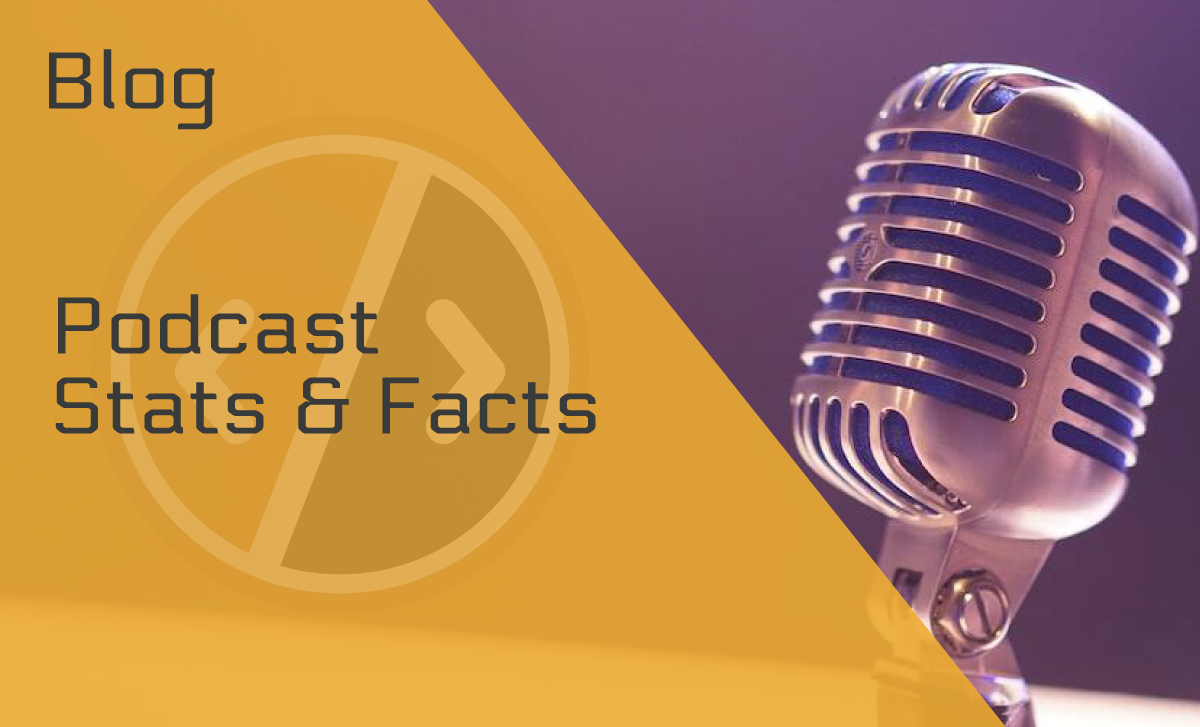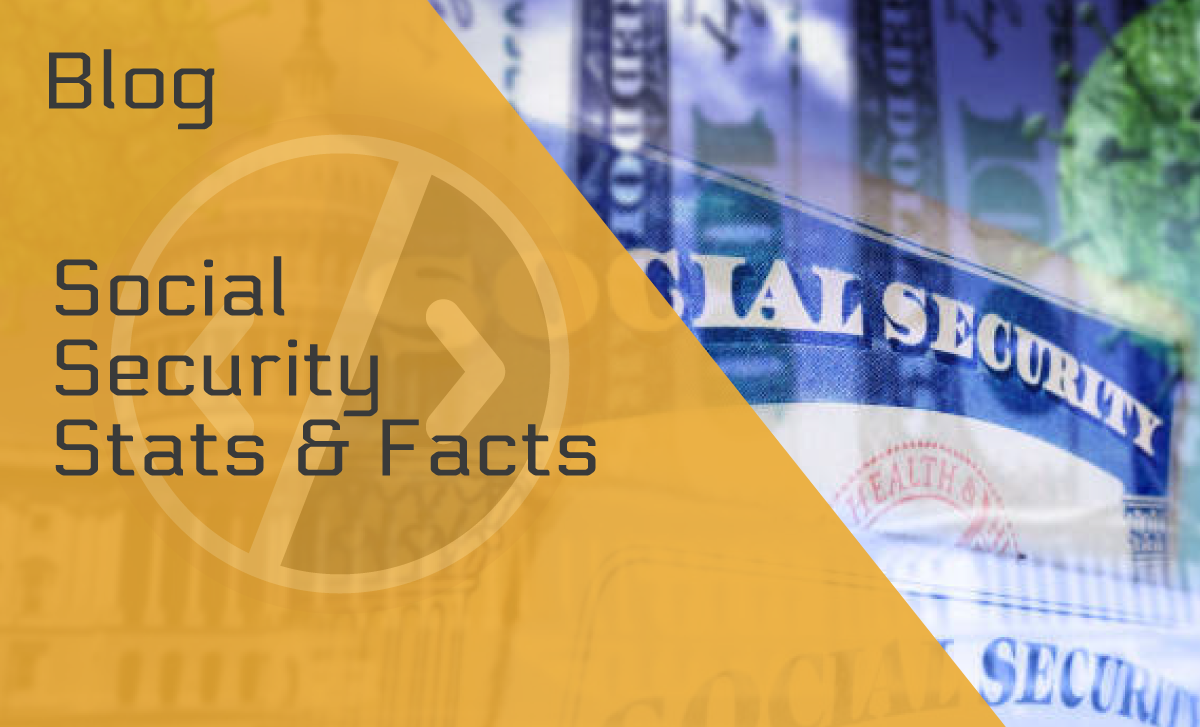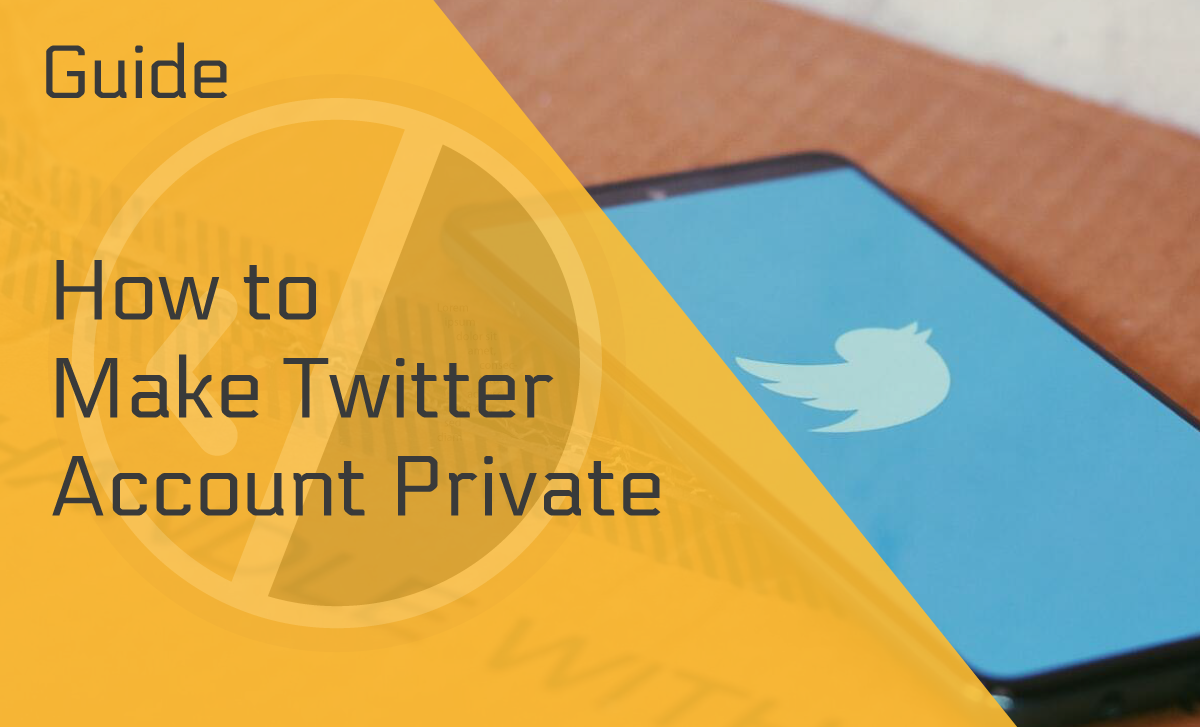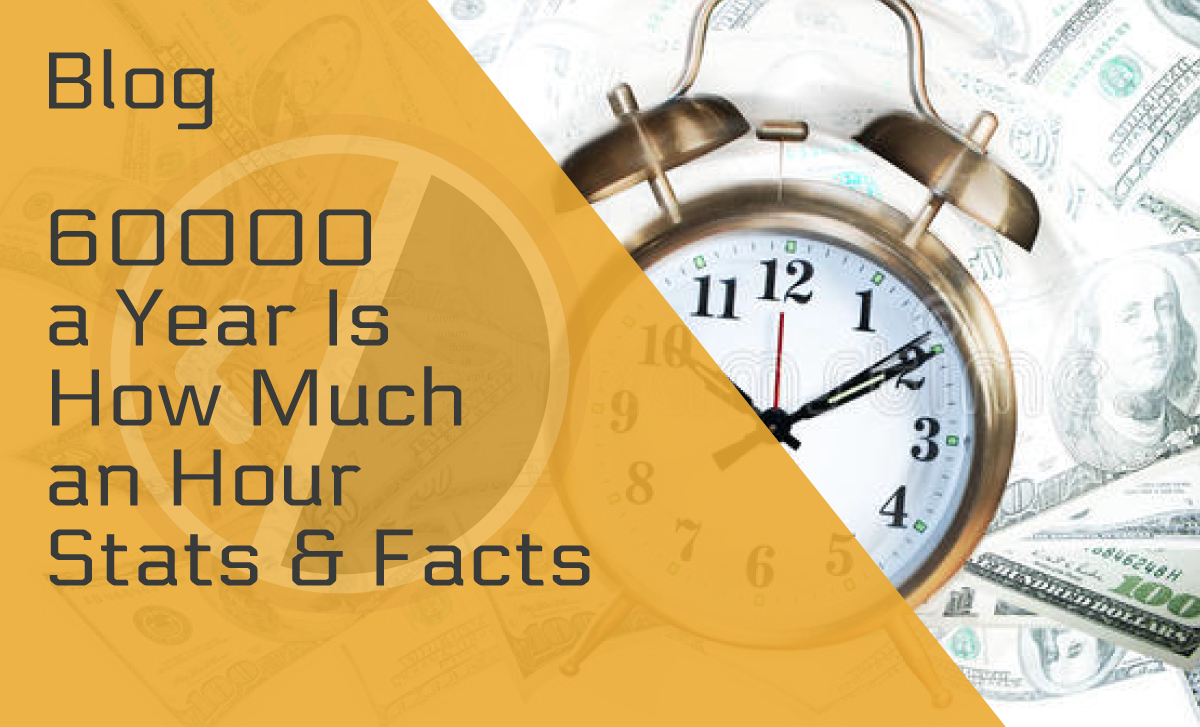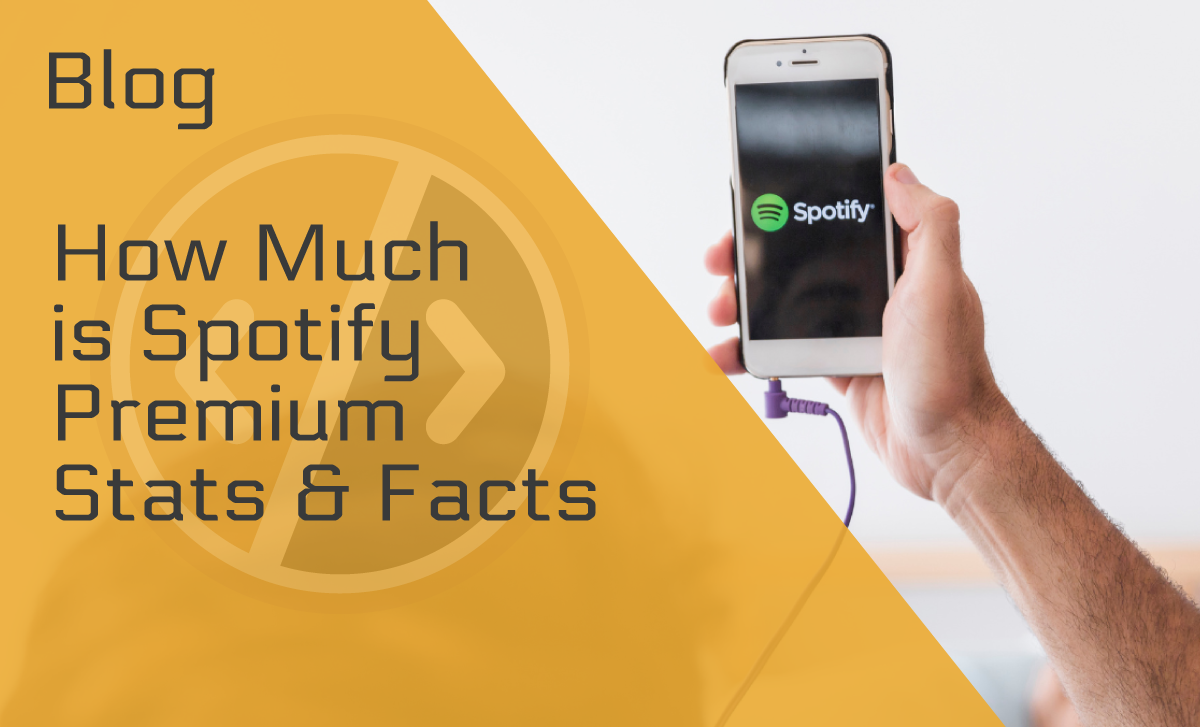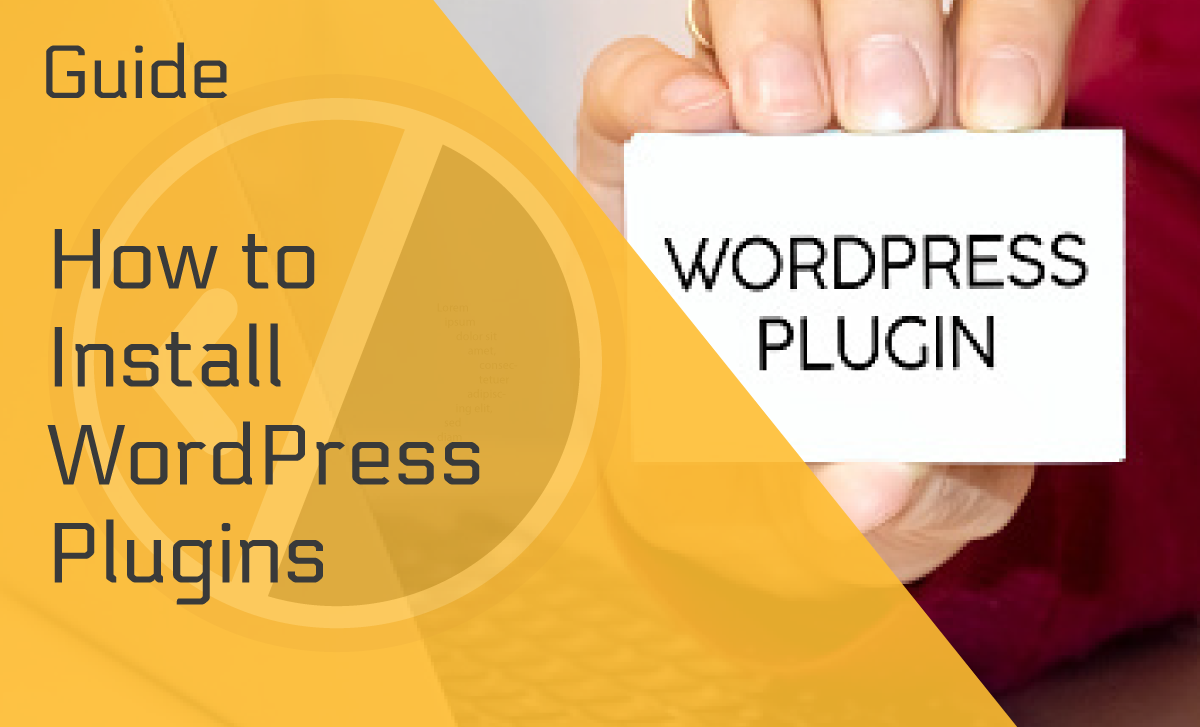How to Get a Small Business Loan: An In-Depth Guide
Published: November 19, 2020
To increase your working capital, fill in the cash flow gaps, or start a business online, it’s essential to know where and how to get a small business loan. This ultimate guide explains and analyzes different types of loans for small businesses so that you can make an informed decision should your business need a loan.
In 2018, the number of small businesses in the US passed the 30-million mark. During the same year, 57% of small business owners had seen an increase in revenue. Nevertheless, 43% of them applied for financing, which is a 3-point increase compared to 2017, while the average small business loan amount was in the neighborhood of $663,000.
The problems with financing growth arose in two areas—the complex terminology behind loan products, and high rejection rates, especially from big banks (80%). So we won’t just try to explain how to get a small business loan, but we’ll also demystify the terminology behind business loans and explore all the options business owners have when it comes to business financing.
Common Reasons for Requesting a Small Business Loan
The list of reasons for getting a business loan can be quite long. Business owners apply for a loan when purchasing equipment or inventory, as well as when opening a new location. Starting a business is another common reason for applying for a loan. However, startup-friendly loans are more challenging to obtain. Most lenders require that a business has been making revenue for at least six months before approving startup business loans.
Next on the list of reasons to apply for financing is covering business taxes. An interesting piece of information is that 52% of small business owners believe they pay too much in taxes. An even larger portion of them (62%) think their accountants could find more ways to reduce their businesses’ taxes.
Covering unexpected expenses is often on the list of reasons for applying for a loan. Other situations in which businesses apply for financing include hiring talent and buying insurance, among other reasons.
Small Business Loan Types and How to Qualify
Business Lines of Credit
Business lines of credit allow business owners to borrow a specific amount of money from a financial institution. There’s a limit to how much a business can borrow, and it typically ranges from $5,000 to $50,000.
The benefit of this type of business financing is that a borrower pays interest only on the amount of money they’ve drawn. If they don’t reach the agreed credit limit, they won’t pay interest on the money they haven’t drawn. Additionally, these small business loans can be used repeatedly, as long as the borrower doesn’t exceed their credit limit. For this reason, lines of credit are classified as open-end credit. They also fall into the category of revolving loans.
The most common uses of lines of credit include short-term financing and covering unexpected expenses.
Understanding the Difference Between Personal and Business Lines of Credit
Lines of credit, as a source of financing, are often divided into two categories—personal and business. The difference between the two is in the type of possessions used to secure a loan. If used as loans for small business owners, lines of credit require businesses to secure the loan with the business’s assets. Personal lines of credit, on the other hand, are secured with borrower’s personal property (such as their home).
Securing a loan with one’s property is called collateral, while the loans that include collateral are called secured loans. In contrast, loans that don’t have collateral attached to them are called unsecured loans.
Do All Business Lines of Credit Require Collateral?
Putting assets on the line isn’t something that most business owners are looking forward to. However, these assets are what assures lenders that you’ll pay back the money you borrowed. In most cases, you’ll come across business lines of credit that require collateral. So it’s not surprising if you’re wondering how to get a small business loan without collateral. Is this even possible with business lines of credit?
Business lines of credit without collateral do exist. However, from a business’s perspective, this type of loan is less tempting than secured loans. Unsecured lines of credit have shorter payment terms, higher interest rates, and lower credit limits compared to secured loans.
How to Qualify for a Business Line of Credit?
Getting a business loan of this kind typically requires a strong credit score, which, in most cases, should be over 600. When it comes to annual revenues, a business should have a yearly income of between $25,000 and $50,000. To get this loan, it’s also essential for owners to be in business for at least six months.
Where to Get a Business Line of Credit Loan?
There are two ways to get a line of credit for your business. You can get this type of small business loan from a traditional bank or from alternative (non-bank) lenders.
Getting a loan from either of the two sources has its upsides and downsides. Traditional financial institutions have fairly low interest rates. Although alternative lenders offer reasonable rates as well, they are usually higher than those offered by traditional banks. Why is that so?
Alternative lenders tend to approve a line of credit to high-risk loan applicants, i.e., applicants that might not be able to repay the money they borrowed. Applying for a small business loan from online lenders might also be the only option for new businesses, businesses with low profits, etc. Banks often reject high-risk loan applications.
In essence, banks offer better interest rates but have stricter rules. In contrast, online lenders often have high interest rates, but qualifying for a loan is not as tricky as it is with banks.
What Documentation Do I Need for a Business Line of Credit?
The documentation you’ll need when applying for a line of credit varies from one lender to another. However, when you apply for a small business loan of this kind, most lenders will require the following documents from you:
- Your credit score
- Profit and loss statements
- Both your personal and your business’s tax returns
- Balance sheets
- A voided business check
- Bank statements
- Your driver’s license
Line of Credit Interest Rates
When it comes to business lines of credit, they often have a variable interest rate. This means that interest rates can change over time. Plus, if you go over the predetermined credit limit, this too will increase your interest rates.
Fees Behind Business Lines of Credit
Apart from small business loan interest rates associated with a business line of credit, you should consider different types of costs that come with this type of loan. For instance, a business line of credit usually has an initial processing fee. However, there might also be a fee for every transaction you make when withdrawing cash.
Can I Get a Small Business Loan with Bad Credit?
One of the primary concerns business owners have when applying for a business loan is whether they’ll get a loan if they have a bad credit score.
The answer is both yes and no. Some loan companies have a rule of extending loans only to businesses with good credit scores. Other companies are willing to make exceptions to this rule, but they are likely to impose high interest rates.
How to Apply for a Business Line of Credit?
If you want to know how to get a small business loan, or specifically, a revolving credit, there are five steps you should follow:
- Compare lenders to decide which one offers the best loan terms
- Do some research on the lender you’ve chosen to make sure they’re reliable
- Double-check if your business qualifies for the loan you’re applying for
- Submit your application for a small business loan
- Wait for the lender’s response
The most significant advantage of a business line of credit is flexibility.
Business Line of Credit vs. Business Credit Card
Business credit cards are a form of short-term small business funding, much like business lines of credit. The difference between these two types of revolving loans is that business credit cards usually have a significantly lower maximum credit limit. In most cases, a business line of credit gives business owners access to up to $100,000, whereas the limit for business credit cards is half that amount.
Another difference between these two types of financing is that business credit cards are unsecured, meaning no collateral is associated with them. On the other hand, a business line of credit can be either secured or unsecured.
A business credit card is one of the most common choices for getting an unsecured business loan for startup businesses. Plus, unlike a business line of credit, a business credit card offers rewards, but many financial experts see credit cards as a last resort.
Business Credit Cards and Annual Percentage Rates
With some of the benefits associated with this type of revolving loan, you might be wondering how business credit cards could get you in financial trouble. Well, they usually have high interest rates, as well as fees for every transaction you make. The average Annual Percentage Rate (APR) for business credit cards is between 14% and 25%. If we compare these rates with small business administration loan APR rates, which range between 7.75% and 10%, you can see the latter option offers significantly lower APR rates.
When it comes to the repayment schedule, credit cards often require you to pay a specific amount at the end of the month. If you fail to do so, you’ll face late payment fees, which will further increase your credit card expenses.
Lastly, business credit cards can be used to improve a credit score, but this requires making payments on time. So, if you opt for this type of business financing, we recommend using business credit cards with great caution to avoid excessive debt.
Business Term Loans
First, let’s define a business term loan, which is the most common type of loan for small business owners.
A term loan allows businesses to borrow money from a bank, online lender, or the Small Business Administration, and repay that money by making fixed payments within a defined period.
Based on the amount of time a borrower has to repay the borrowed money, term loans can be divided into short-term, medium-term, and long-term loans.
Short-Term Business Loans
Short-term loans typically have a repayment period of 3 to 18 months, and up to 2 years. These loans have high interest rates compared to long-term loans, but they are easier to obtain. Additionally, short-term loans are also referred to as quick small business loans, as approved businesses usually get the funds within one week, and in some cases, in just a couple of days.
The average short-term loan amount is $20,000, while the minimum and maximum amounts are $2,500 and $250,000, respectively. The annual percentage rate for these loans has a wide range, spanning from 8.5% to 80%.
Medium-Term and Long-Term Business Loans
With medium-term loans, a borrower usually has anywhere from 2 to 5 years to pay the loan back. Loans that can be paid after more than 5 years are considered long-term loans.
Some small business loans, for startups and established businesses alike, are not that easy to obtain, which is particularly true for long-term loans. Getting a loan of this type is an excellent financing option for small businesses, as their APRs range between 7% and 30% for medium-term loans, 5% for long-term bank loans, and 7.75% for SBA’s term loans.
Business Term Loan Qualifications
There are no exact rules that determine whether your application for a loan will get approved. However, by analyzing the latest small business stats, we’ve found some similarities in terms of annual revenues and credit scores between businesses that got this type of loan.
The good news is that for these established and startup business loans, bad credit scores don’t necessarily have to be an obstacle. Short-term loans typically require a credit score above 550, which is still in the “bad credit” category. The same applies to medium-term loans, where businesses should have a credit score of 600 or higher to qualify for a loan.
When it comes to long-term bank and SBA loans, the desired credit score is over 640, which is labeled as “fair.” However, as long-term loans are in high demand, you have better chances of getting a small business loan of this kind if you have a “good” credit score (690–719).
Next, we have the average annual revenues of companies that obtained a term loan. For a short-term loan, the average annual income was $50,000, while medium-term and long-term loans required double that amount, i.e., $100,000 or more.
Lastly, businesses that got a short-term loan were at least nine months in business. For medium-term loans, this period was somewhat longer—one year, and businesses that got long-term loans were in business for more than two years.
Term Loan Application: How to Get a Small Business Loan
Now that you are familiar with the broad criteria for obtaining a term loan, your first step is to choose the length of the loan term that best suits your business. Because these loans have a set payment structure, you can quickly calculate your daily/weekly/monthly payments.
Make sure you can afford the loan you’ve chosen. You can easily check that by calculating your debt service coverage ratio. To do that, divide your business’s net operating income by your yearly debt amount. While exploring your options as to where to get a small business loan, make sure your DMCR value is at least 1.2. If it’s lower than that, your loan application will probably be rejected.
Next, compare different lenders to find the best offers. If you decide to go with a traditional bank, you’ll need the same documentation as you would for a business line of credit. This includes balance sheets, profit and loss statements, business tax returns, etc. Banks usually offer reasonable small business loan rates. So if you have collateral and a good credit score, you should have no trouble getting a bank term loan.
If you lack both of these things, then you might want to look at what online lenders offer. With an online loan, the application process is far less complicated than with traditional banks. However, their APRs are significantly higher.
Small Business Administration Loans
The Small Business Administration is a government agency that helps US small businesses and entrepreneurs financially via loans and grants. The agency also offers practical advice on everything related to small business. Aside from that, they provide in-depth guides on how to start a startup, and how to grow and manage it. However, the reason we are discussing them in this post are the various small business loans that they offer.
SBA Loans Contributors
Before we explore different loan types the SBA offers, it’s essential to explain one thing. The agency doesn’t directly give loans to small businesses, instead, it helps them get a loan from a lender. The SBA collaborates and is in partnerships with 800 different lenders and financial institutions and organizations. It also guarantees to pay back the lender a portion of the small business loan. So if a business cannot repay a loan, the SBA covers the agreed portion of the loan for them.
Types of SBA Loans
There are four main SBA small business loans, including 7(a) and 504 programs, disaster loans, and microloans. Each of the loan programs specifies what the funds can be used for, as well as maximum loan amounts, interest rates, and repayment periods.
The 7(a) Loan
Both the 7(a) and 504 programs have the maximum amount of $5 million, but how a small business can use these funds is different. The 7(a) loan is typically used for business expansion, working capital, and for purchasing equipment or refinancing debt. Additionally, if you’ve been wondering how to get a loan to buy a business, the SBA’s 7(a) program might be an ideal solution for that purpose as well.
The majority of SBA’s 7(a) loans are categorized as term loans, or more specifically, long-term loans. However, the government agency offers lines of credit too under their CAPLines program providing cash flow solutions and working capital of up to $2 million. Other subprograms of the 7(a) loan include:
- 7(a) small loans—loans under $350,000, turnaround approval between 6 and 10 days
- SBA Express—loans under $350,000, turnaround approval within 36 hours
- Export Express—loans up to $500,000 for export businesses
- Community Advantage—loans up to $250,000 for new and existing businesses
- Export Working Capital—loans up to $5 million for export businesses
- International Trade—loans up to $5 million for export businesses
- Veterans Advantage—veterans’ small business loans of up to $350,000
Business owners get to enjoy a repayment period of 5 to 25 years, depending on how they plan to use the loan proceeds, on the repayment terms, and on the loan amount.
When it comes to collateral, SBA-guaranteed loans under $25,000, in general, don’t require collateral, while loans between $25,000 and $350,000 do.
Guarantees and Down Payments for SBA Loans
One of the primary reasons SBA loans enjoy astounding popularity is the guarantee the agency provides on its loans. That guarantee is the SBA’s promise to lenders that the agency will pay 75% to 85% of the loan if it goes into default and the borrower cannot pay back the loan.
Let’s say you’ve got an SBA startup loan under the 7(a) program. In this instance, if the loan amount is lower than $150,000, SBA’s maximum guarantee is 85% of that amount. If your loan is larger than $150,000, the SBA guarantee extends to 75% of the loan amount, but it can’t be over $3.75 million.
Next, for the Express loans, the SBA guarantees 50% of the loan amount. The same applies to SBA small business loans for veterans if the loan is processed as an Express loan of up to $350,000. If a veteran-owned business loan is processed under SBA’s 7(a) loan program, the guarantee percent is the same as for 7(a) loans.
For international loans, i.e., Export Express, Export Working Capital, and International Trade programs, the SBA offers a 90% guarantee. The only exception is the Export Express loan higher than $350,000, in which case the SBA guarantee is 75%.
When it comes to down payment requirements, business owners typically have to provide a 10% to 20% down payment on 7(a) loans.
The 504 Loan
The 504 loan is meant to help small businesses purchase and upgrade fixed assets, such as land or machinery. SBA’s 504 business loans for small business owners are distributed between three parties. These parties are the business owner, a certified development company (CDC), and a traditional lender, which is, in most cases, a bank.
Each of the parties contributes to the loan by securing a specific portion of it. A traditional lender extends half of the loan amount, while a certified development company, which is approved by the SBA, is responsible for providing 40% of the loan. A business owner should provide the remaining amount of the business loan, i.e., 10% of the loan amount.
Additionally, as far as a 504 startup loan for new business owners, and new businesses in general goes, the owner has to put an additional 5% down. The same goes for specialty use properties.
SBA guarantees between $5 million and $5.5 million for its 504 loans.
The 504 Refinancing Program
Apart from the traditional 504 loan program, the SBA also offers the 504 Refinancing program. This program helps businesses cover their debt from non-SBA commercial loans used for fixed assets. Businesses and their debt must be at least two years old to qualify for this program.
SBA Microloans
Another type of SBA loan is a microloan. The maximum amount of these loans is $50,000, while the minimum amount is $500. SBA’s microloans are usually short-term, but it can take up to 6 years for them to reach maturity, while the interest rates range between 8% and 13%.
This type of loan can be used for numerous purposes, excluding real estate. Additionally, microloans, unlike many other SBA loans, don’t have a loan guarantee percentage, and consequently, no guarantee fees. Due to their overall flexibility, these loans are commonly referred to as small business and startup loans for minorities, women, and veterans.
Disaster Loans
In the case of natural disasters, small businesses may be eligible for an SBA loan due to physical or economic loss. These loans have long repayment terms of up to 30 years. The interest rates vary from 4% to 8%, while the maximum loan amount is $2 million. For in-depth information on disaster loans, be sure to visit the SBA’s official website.
SBA Loan Rates
When it comes to SBA interest rates, different loan programs come with different interest rates. At the time of writing, SBA interest rates for different loans are as follows (including the prime rate of 5.5%):
- 7(a) loans: 7.75%–10.25%
- 7(a) small loan: 7.75%–10.25%
- SBA Express: 10%–12%
- Community Advantage: 11%
- Export Working Capital: Maximum interest rate not set by the SBA
- International Trade: 7.75%–10.25%
- Export Express: 10%–12%
- Veterans Advantage: Same as 7(a) loans or SBA Express, depending on how it’s processed
- CAPLines: 7.75%–10.25%
- 504: current 5-year treasury rate + fixed rate 0.38% + ongoing fees 1.7% for a 10-year 504 loan; and the current 10-year treasury rate + a fixed rate of 0.48% + ongoing fees 1.7% for 20-year 504 loans
- SBA microloans: 8%–13%, may vary depending on the lender
- Disaster loans: 4%–8%.
SBA Loan Eligibility Criteria
SBA loans are in no way easy small business loans. The ideal credit score for these loans is between 640 and 680. For someone with a bad credit history, this criterion can be a deal-breaker. Plus, SBA loans are the last resort for small businesses. This means that before they apply for this loan, small business owners should exhaust all of their other financing options. If their loan search ends without a loan approval, only then should they apply for an SBA loan.
Businesses applying for a loan must operate in the US, which is also one of the SBA loan requirements. They also need to be for-profit businesses and match the small business size standard. You may be wondering: what is a small business size standard? Well, based on the number of employees or average annual receipts, the SB size standard determines whether a business is a small business. You can use the SBA’s Size Standards Tool to check if your business falls into the category of small businesses.
Additionally, to get this loan, a business owner needs to invest their time or money into the business they own.
When it comes to small business loans, startup and new business owners must have a clear business purpose and an impeccable business plan. Moreover, some industries aren’t eligible for SBA loans. This includes gambling businesses, insurance companies, companies that are in the lending business, etc.
There’s an unwritten rule related to how long a borrower has been in business. The longer you’ve been in business, the better the chances you’ll get approved for an SBA loan. Nevertheless, the SBA strives to provide small businesses with financial aid, which includes both new and already established businesses.
How to Apply for a Small Business Loan from SBA?
Applying for this loan involves six steps, the first of which is to select one of the SBA loan programs, and check whether you’re eligible for it.
The next step is to find a lender. Some of the things to pay attention to include:
- Whether the lender is SBA-approved
- If the lender offers the SBA program you want to apply for
- How much can you borrow?
- Do they require a down payment? Can you give that amount of money upfront?
- What’s the quality of the lender’s customer service? You’ll probably have some questions, so the lender you decide to go with must provide excellent customer support
- How long will it take for your business to get funds?
Depending on whether you’re applying for SBA startup small business loans, or you own an established business, you’ll need the following documentation:
- A cash flow statement
- Personal and business tax returns
- A profit and loss statement
- Balance sheets
- A resume of the business owner
- Proof of ownership and a business license
- A robust business plan
To meet SBA’s small business loan requirements, you’ll also need to define exactly how much money you want to borrow. Additionally, you’ll need to specify how you plan on spending the loan proceeds and have a one to three-year financial projection.
SBA loans come with a lot of paperwork. With that in mind, here are some forms you’ll need to fill out when applying for a loan:
- Borrower Information Form (Form 1919) required for all SBA 7(a) and Community Advantage loans
- Personal Financial Statement (Form 413) required for all SBA 7(a) and 504 loans
- Statement of Personal History (Form 912) required for all SBA loan applicants.
When it comes to SBA’s business loans, some of the best small business loans for startups are the Community Advantage and Microloans programs. If you’re just starting out, it might be a good idea to check your business’s eligibility for these two loan programs first. After that, you should consider other SBA loans.
Equipment Loans
Another common type of business loan is an equipment loan. This type of loan is quite handy for small businesses that want to purchase large vehicles, restaurant equipment, healthcare and agricultural equipment, etc.
One of the things that separate equipment loans from lines of credit, SBA startup loans, and term loans is that equipment loans don’t require collateral. For these loans, the collateral is the equipment small businesses are taking out a loan for.
This type of loan is also useful for tech companies that require expensive hardware and software. On average, a data breach costs $3.86 million, with tech businesses being the main hacker targets. Therefore, these loans can be useful to technology startups that need to acquire vital cybersecurity equipment fast.
Now let’s take a look at the requirements for equipment loans.
Requirements and Terms for Equipment Loans
When it comes to business funding requirements, equipment loans are not very different from other types of loans if we take the collateral out of the equation. To obtain an equipment loan, the borrower should have a credit score of 600 or higher. The average small business loan interest rate for purchasing equipment is between 6% and 9%, but it can go up to 30%, depending on the lender.
Repayment terms for an equipment loan are typically in the range of 3 to 7 years but can extend up to 10 years.
Repayment terms depend on the equipment you’re purchasing and its shelf life. Additionally, the loan amount, which is, in most cases, between $10,000 and $50,000, also has a significant impact on the repayment terms.
While an equipment loan is usually a business loan without collateral, it does require a down payment from the borrower. The down payment ranges from 10 to 20% of the loan amount.
Equipment Loan Alternative: Equipment Lease
Another way of getting equipment for your business is an equipment lease. This way, small business owners can use the equipment, and for that, they are paying a leasing fee, whereas the leasing company is the equipment owner.
On the other hand, the borrower may both lease the equipment and purchase it at the end of the lease term via the Fair Market Value (FMV) Lease, $1 Buyout, and 10% Option Lease, without applying for small business loans of this type.
Fair Market Value Lease
With the Fair Market Value Lease, the borrower is paying a leasing fee for a set timeframe. After the lease term is over, the borrower has the option to buy the equipment at a fair market value, which is significantly lower than its market or appraised value. The FMV lease is often the choice of businesses that don’t want to purchase the equipment at the end of the term. Also, the equipment under the lease usually has a short shelf life.
$1 Buyout Lease
The $1 buyout lease is designed so that the borrower pays off the equipment during the lease term, and it is quite similar to small business loans for purchasing equipment. At the end of the term, the borrower can pay the residual of $1, which will give them the ownership of the leased equipment.
These leases are best for businesses that want to purchase the equipment at the end of the contract but want to divide its cost into monthly payments, as opposed to paying the full amount at once. However, as leases can be costlier than loans, it’s best to use a small business loan calculator before opting for this or other types of equipment leases.
10% Option Lease
The 10% option lease is similar to the $1 buyout, but it is friendlier towards borrowers when it comes to the monthly payment amounts. At the end of the lease term, the borrower can purchase leased equipment for one-tenth of its full price. This lease is typically used by businesses that aren’t sure whether they’ll buy the equipment at the end of the lease term or not.
Can I Get an Equipment Loan with No Money?
Many borrowers are looking for information on how to get a business loan with no money so they can purchase equipment for their business. However, the vast majority of lending institutions require a down payment for equipment loans.
Nevertheless, some lenders are willing to finance 100% of the loan amount. In such situations, your business’s cash flow is not the deciding factor in whether you’ll get a loan or not, but your credit score and time in business are.
On the other hand, equipment leases rarely require down payment or collateral. For this reason, equipment leases might be a perfect alternative to equipment loans for startup business owners. The same goes for business owners that have little or no money in their bank account.
Which Is Better—an Equipment Loan or a Lease?
The rule of thumb is that you should lease equipment if it has a short shelf life. On the other hand, if you plan on using the equipment for years to come, applying for an equipment loan might be a better option for your business.
Where Can I Get an Equipment Loan or Lease?
As it is the case with all types of loans, equipment loans are also available with traditional financial institutions and online lenders. One of the many equipment financing options is the PayPal business loan that ranges from $5,000 to $500,000. This loan doesn’t require a high credit score. This criterion makes it an excellent small business loan for women and men alike that are struggling to get a loan due to bad credit.
Apart from PayPal business loans, there are a number of other online lenders that are willing to work with small businesses that have bad credit. Pay attention to interest rates behind online loans, as they are usually much higher than those offered by traditional lenders.
On the other hand, traditional banks are the first choice for small business owners looking for an equipment loan. The reason for this is that some of the best banks for small business loans for equipment financing offer lower interest rates and longer repayment terms than online lenders.
Bank of America has become one of the top lenders among small businesses. The bank has worked with over 3 million small businesses, and it offers various lending programs, including equipment loans.
When it comes to loans for purchasing equipment, Bank of America requires that the borrower puts 20% down. If that’s too large of an investment for you, the bank also has an equipment leasing program. So, apart from offering traditional small business loans, Bank of America can also help you lease the equipment you won’t need in the long run.
How to Apply for an Equipment Loan?
If you decide to go with online lenders, you can apply for an equipment loan online. Banks, on the other hand, more often than not, don’t offer the option of applying online. Instead, you can apply for the loan by phone or by visiting one of the bank’s offices.
When it comes to the documentation businesses need when applying for bank loans for small business equipment financing, some of the documents you’ll probably need are:
- Basic information about your business
- Invoice for the equipment
- Business tax returns
- A profit and loss statement
- Balance sheets
- Proof of ownership and a business license
Invoice Financing and Factoring
Apart from all small business loan types we’ve covered so far, there are two more commonly used business loans. These two loans are invoice financing and invoice factoring. The reason we decided to put these two loans in the same basket is that they are quite similar. With that in mind, let’s first take a look at the situations in which businesses typically apply for these two types of loans.
Invoice financing and factoring are both used when a business has outstanding accounts receivables. The difference between the two business loans lies behind the question: who collects the unpaid invoices? If a small business owner decides to manage invoices, we’re talking about invoice financing. In contrast, if they sell their invoices to a lending company, and the lender is in charge of collecting invoices from business’s customers, we’re talking about invoice factoring.
In both instances, businesses can get 85% of the due invoices amount upfront, and the remaining 15% is paid to them later.
Which Is Better—Invoice Financing or Invoice Factoring?
Both these loans have their pros and cons. When it comes to small business loans rates, invoice financing usually has an interest rate of 3% to 5%. Invoice factoring interest rates are much higher, up to 15% of the invoice amount. So from this aspect, invoice financing seems like a better option for turning unpaid invoices into cash.
Also, businesses that choose invoice financing have the flexibility to collect due invoices on their own terms. This way, their clients don’t have to know they’re using a financial company.
If we look at things from a different angle, invoice financing is a type of business loan, whereas invoice factoring is technically a sale. The latter doesn’t affect your credit in any way. So, consider all of your options, and decide which of the two would better suit your business.
Invoice Financing Requirements
The first invoice financing requirement is that you own a business-to-business (B2B) or business-to-government (B2G) business.
Even though invoice financing falls in the category of small business loans, bad credit doesn’t have too big of an impact on the loan approval. The vital factor in determining invoice financing eligibility is the quality of invoices. Taking this into account, the easier it is for an invoice company to collect due payments, the higher the chances that you’ll be approved for invoice financing.
Other requirements include time in business (at least six months), and annual revenue ($50,000), while invoices act as loan collateral.
Invoice Factoring Requirements
To qualify for invoice factoring, you should have a B2B or B2G business for two years or longer, with monthly revenues of at least $25,000. The invoices you’re trying to collect should have a 30 to 90-day payment deadline and be free of liens. Plus, your profit margins should be in the 10% to 15% range.
Where and How to Obtain a Small Business Loan for Invoice Financing
In most cases, businesses can get invoice financing loans from online lenders that specialize in invoice financing. The same applies to invoice factoring.
When it comes to the documentation needed, you’ll need to provide accounts payable aging report, as well as some essential information about your business.
Merchant Cash Advance Loans
Another type of loan for small businesses is merchant cash advance, which is popular among online merchants. Whereas startup business loans are usually not that easy to obtain, merchant cash advance (MCA) loans don’t have such strict requirements.
How Does Merchant Cash Advance Work?
With MCA, businesses get a specific amount of money from financing companies. In turn, these companies get a portion of the business’s daily credit card and debit card sales, i.e., holdback percentage. Additionally, fees that come with this type of loan are quite high. MCA loans are the most expensive business loan product on the market. So, if you can qualify for a different kind of a business loan, seize that opportunity.
Why Are MCAs Popular Despite Their High Fees?
A merchant cash advance certainly doesn’t offer low interest rates. In most cases, MCA business loan interest rates are between 9% and 50%. Plus, the average APR is between 80% and 120%. Still, many business owners use it. The question is—why?
Well, for one, it doesn’t have strict qualification rules, unlike many traditional loan products. New business owners have trouble getting a business loan from a bank, as they haven’t been in business long enough. Furthermore, if their credit score is not satisfactory, the chances of having their application for small business loans approved by a traditional lending institution decrease even more.
Finding some of the best businesses to start online is not the tricky part, but finding financing options is. For this reason, many new business owners are turning to merchant cash advances.
MCA Qualifications
As we previously mentioned, MCAs don’t require good credit. Business owners with a credit score of 500–550 can easily qualify for this type of loan. Taking this into account, MCAs are often described as small business loans for bad credit borrowers.
The minimum and maximum loan amounts are $2,500 and $250,000, respectively. When it comes to revenue requirements, businesses should generate at least $150,000 per month. Although time in business is not a determining factor for getting an MCA loan, it’s desirable to have a business that’s at least 6 months old.
How to Apply for Merchant Cash Advance?
Now that we’ve covered small business loan qualifications for a merchant cash advance, we can jump to the documentation you need to apply for this loan.
MCAs don’t have a lengthy application process, and typically require some essential information about your business and three months’ worth of business bank statements. You may also need credit card processing statements, a voided business check, and business tax returns.
When choosing a merchant cash advance provider, be sure to check all the fees these loans carry, including factor rate, APR, and origination fee. Also, make sure you know the maximum amount you can borrow, and above it all, how reputable the provider is.
Which Loans Are Best for New and Startup Businesses?
When it comes to government small business loans, SBA’s microloans and the Community Advantage Program are excellent financing options for startups, and for starting a small business. Other great options for new small businesses include:
- Invoice Financing—fills the cash flow gaps from outstanding invoices
- Equipment Loans—used for purchasing equipment without collateral
- Business Credit Cards—good financing option for new business owners with good personal credit, often come with introductory zero-percent interest rates
- Personal Business Loans—if all else fails, new business owners can apply for a personal loan to fund their business.
Apart from the loans mentioned above, new business and startup owners can benefit from venture capital lending. This type of funding doesn’t require your business to have been around for long, and business owners don’t have to pay back the money they’ve received from venture capitalists. The same goes for angel investors, but they tend to invest less money than venture capitalists. Still, this type of business funding requires giving up a portion of your business, and 75% of startups fail when backed by a venture capitalist.
Another startup funding option is a grant from the government. So, if applying for a grant sounds good to you, be sure to visit Grants.gov to try to find a grant program for your business.
Which Loans Are Best for Established Businesses?
Businesses with great credit that have been around for several years can apply for most types of loans, including term loans, and lines of credit. These businesses can apply for a bank loan instead of looking for alternative lenders.
Best Bank for Small Business Loans
When it comes to the question of what the best bank for obtaining small business loans is, the answer is Well Fargo. They are an SBA-approved lender that last year approved nearly 3,900 SBA loans worth $1.19 billion.
Closing Thoughts
As you can see, there are many ways for small businesses to get a loan. Do keep in mind that bank loans have somewhat lengthy loan funding times, while online lenders, in most cases, have high interest rates.
Our final piece of advice on how to get a small business loan is that you clearly define why you need a business loan, as well as how much money you want to borrow before you apply for a loan. Having a stellar business plan can’t hurt either.
Additionally, when choosing a business loan provider, always check their reputation, eligibility requirements for the loans they offer, and business loan rates associated with those loans.
Good luck!
